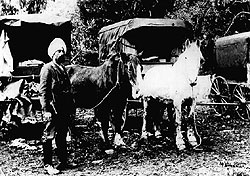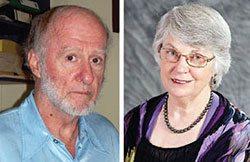|
When Indians fist arrived in Australia is unclear, however, they arrived in small numbers, from or shortly after the First Settlement in Australia, in 1788. However, large numbers of Indians arrived in Australia after the 1880s as indented labourers, to work on the sugar plantations in Queensland and New South Wales.
In Victoria, large numbers arrived as free immigrants, having paid their own fares and other travelling expenses. This was the first and possibly the only wave of free migration from Asia to Australia.
The Indians in Queensland, at the completion of their indenture, travelled far and wide seeking employment in rural and other allied areas of employment. Some of these cane cutters who found work did not return to the cane fields, while others returned to the sugar cane fields and worked there until the end of the cane cutting season. Many followed this pattern for many seasons.
In Victoria, the Indian migrants after landing in Melbourne, travelled to the bush seeking various types of rural employment, some found their way into hawking from one farm to the next.

Sunda Singh
HAWKING
Hawking was a very lucrative occupation and as a result most Indians were able to return to India and live in comfort, while others remained in Australia. The ones that remained in Australia became part of the community in which they lived, and became involved in many activities such as; donating to hospitals and other charitable works, joining cricket and football clubs, breeding and presenting their horses at the local shows, competing in athletics and wrestling competitions. Many of their remains lie in unmarked graves and cremation sites.
Hawkers lived lonely solitary lives tramping along country roads, following the same route and using regular camping places, where they sometimes stayed for several days. Although they earned good money and finished up financially successful, very few of them had wives and family with them. Few if any married in Victoria, although they were included into the community and made lasting friendships. They were always on the move—sleeping in their wagons, camping out rough or at farm houses on their rounds, where in most cases they were welcomed into the home sharing meals, telling stories and receiving fodder for their horses. Sometimes they stayed for several days and on special occasions other Hawkers joined them. On these occasions they camped away from the main house.
Sunda Singh started his Hawking career with his goods wrapped in a bundle strapped to his back. The cost of his License for hawking on foot was One Pound per year, and for a horse drawn wagon and two horses. His horses were called Jake and Bally. With this wagon he was able to travel much greater distances and it gave him a degree of independence. Sometime later he bought a farm at Allestree, Victoria. Before his death he paid for the painting of the interior of the Old Portland Hospital. Nearing his death he was sent to the Ballarat Hospital where he died. Sunda left behind a wife and family in Raipur, India.

—Len Kenna and Crystal Jordan have been researching and writing Australian Indian History for the past 20 years, and have amassed an incredible amount of information and photographs on Indians in Australia commencing around 1880 and finishing in the
1950s.
|